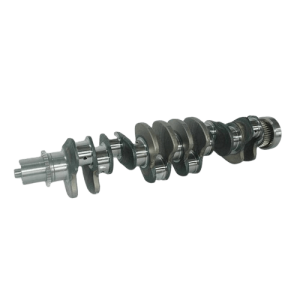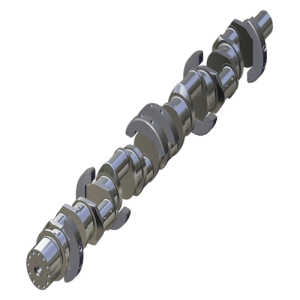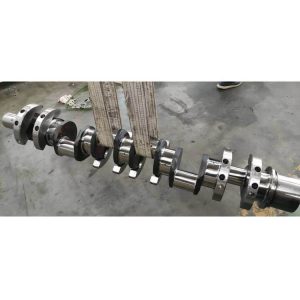Forged crankshaft
Table of Contents
What are Forged crankshaft?
Crankshafts are mainly used in automobile engines and are one of the main parts of automobile engines. Quality directly affects engine performance. The crankshaft and connecting rod are linked together. The forged crankshaft is generally made of carbon steel. The quality of the crankshaft affects the life of the engine. The forged crankshaft generally has high wear resistance and corrosion resistance.

Advantages of forged crankshafts
Forged crankshafts are generally forged by die forging. Die forging is forged at high temperature and high pressure to provide forging hardness and precision. The advantages of forged crankshafts are that the toughness of the crankshaft can be improved. After heat treatment, the crankshaft can increase strength and reduce the risk of fracture, making the crankshaft more suitable for the working environment of the engine and extending the service life of the engine.
Processing technology of forged crankshafts

The first step is to cut the material. The material selection can be 45# steel or 42CR The second step is to forge according to the conventional die forging process, heating → die forging → heat treatment → finishing → dynamic balance detection The die forging process of the crankshaft can adopt closed die forging to improve the accuracy and hardness of the crankshaft.
Forged crankshaft vs cast crankshaft
Cast crankshaft Sand casting or iron mold sand coating process, pour the molten metal into the mold to form, most of the materials are ductile iron, which can be formed in one time, but the disadvantage is obvious, that is, there are sand holes and shrinkage inside the crankshaft. Forged crankshafts can be die forged by high pressure to make the metal billet plastically deformed, and forged multiple times through pre-forging and final forging, and then heat treated and finished to meet the crankshaft requirements. Compared with the tensile strength of cast crankshafts and forged crankshafts, the tensile strength of forged crankshafts is higher than that of cast forging, which is greater than 200MPa. The toughness of forged crankshafts is stronger, and the fatigue resistance and wear resistance are much better than those of castings. The difference between forged crankshafts and cast crankshafts mainly depends on the appearance. The appearance of forged crankshafts is relatively neat and clean, while the appearance of cast crankshafts may have parting lines or sand holes.

How to choose high-quality crankshafts
As a forged crankshaft manufacturer, Luoyang Forging mainly chooses from these points First, the material. Commonly used crankshaft forging materials are 45 steel, 40Cr, 42CrMo, 18CrNiMo7-6. These materials forged crankshafts are generally used in cars, racing cars, trucks, and heavy trucks. Second, forging process Crankshaft forging generally uses a large press of more than 2,000 tons, so that the metal material of the crankshaft can be arranged more closely Third, several key performance indicators Mechanical performance testing (tensile strength, yield strength), wear resistance testing, corrosion resistance testing, etc. If you choose Luoyang Forging, you must need high-performance forged crankshaft customization, we provide: military-grade materials (18CrNiMo7-6), 10 million fatigue test guarantees. And fine processing

